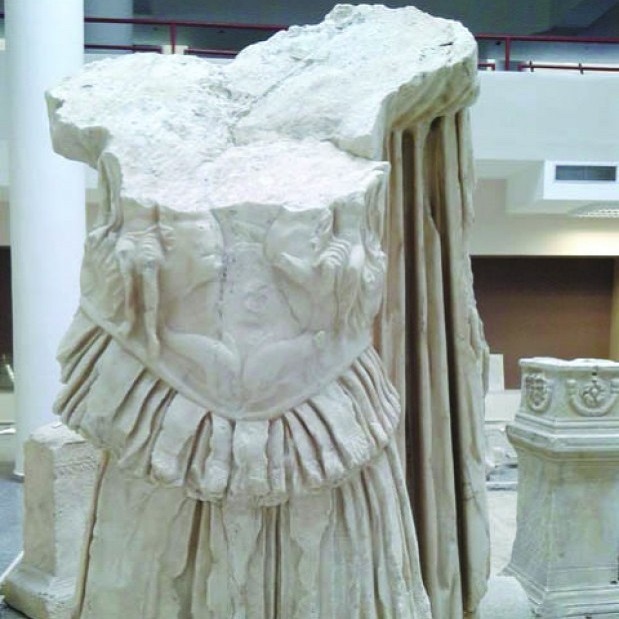Museum, ready about the end of August.
8 July 2014

Ministry of Culture, in 2011, granted 102 million for radically improving the museum, and estimated time for completion of works was 240 days, or eight months.
After nearly four years of renovation, doubling the time of the refurbishment, Durres Archaeological Museum, one of the most important in terms of historical and spiritual heritage of the city, is expected to be finished by the end of August. Invited to show "English" at "Top Channel", which this time was shifted to the premises of the museum, to warn and opening its doors, Mirela Kumbaro Culture Minister, said the work is expected to be completed very quickly, and during August, visitors will be able to have the opportunity to visit the premises of the museum. Almost all the artifacts and monuments inside the museum space have undergone restoration. For the new director of this institution, Ledion Lako, the museum will come redesigned, bearing within him the important periods of the history and archeology of the city. At the entrance of the left wing of the museum is expected to expose the Illyrian and Greek early in its three stages, at first, and later classical or as she called Alexandria. In the front, beyond the archaeological large size that are placed in the center of the museum, it starts from the Roman period to the early construction period on the right side of the first floor. On the second floor will be the medieval period. Work is focused and specialists in maintenance and increased exposure standards. Durres Archaeological Museum is considered one of the richest in the region in terms of archaeological objects.
For its reconstruction works have started in September 2011, and were projected to finish earlier. Throughout the years, the museum has been closed to visitors visiting different city. Along with the renovation, the museum is expected to have a different view and in his yard, which all these years has been in a situation that leaves much to be desired aesthetically. According to the reconstruction project, the yard is expected to return in a minipark, which will dominate the major archaeological objects that will intersect with the greening of decorative trees. Archaeological Museum is one of the pride of the city of Durres. Built on the basis of a design project that in 1982, he has witnessed the operation of a constellation of eminent archaeologists, who directed with passion and competence of the oldest scientific collaborator, Vangel Tozzi. It was the merit of distinguished archaeologist Tozzi, the creation of this museum in 1951, after the discovery of the most famous monuments, such as the ancient amphitheater (1966), Roman terms (1963), the mosaic "of Durres Beauty" (1959) and he hipokampit (1947), full of other monuments in the center and on the outskirts of the city. A part of archaeological objects that were originally settled in the old museum exhibits, the villa promenade "Taulantia", was moved in 2002 to the new archaeological museum, which was built just 200 meters further north on the same street . Only on the first floor of the building located about 2,100 artifacts that belong to the period before the founding of the city until the 4th century AD. A project that lasted nearly 20 years and finally gave the ancient city that has long deserved: a museum space for exposing hundreds of thousands of buildings, evidence of a rich cultural heritage, social and economic uninterrupted forever.
Durres Archaeological Museum and the ancient amphitheater are two of the most visited Durres important tourism centers of historic and highly appreciated by foreign specialists. A greater attention to these important resources for the city would give the museum and other historic buildings and archaeological sites in Durres high numbers of visitors, like the National History Museum "George Kastrioti Skanderbeg" Kruja, which annually hosts about 100 thousand visitors. The decision of the Albanian government for the reconstruction of the museum dates back to January 2011. Ministry of Culture in the time allocated 102 million for drastically improving the museum and the estimated time for completion of works was 240 days, or eight months.
